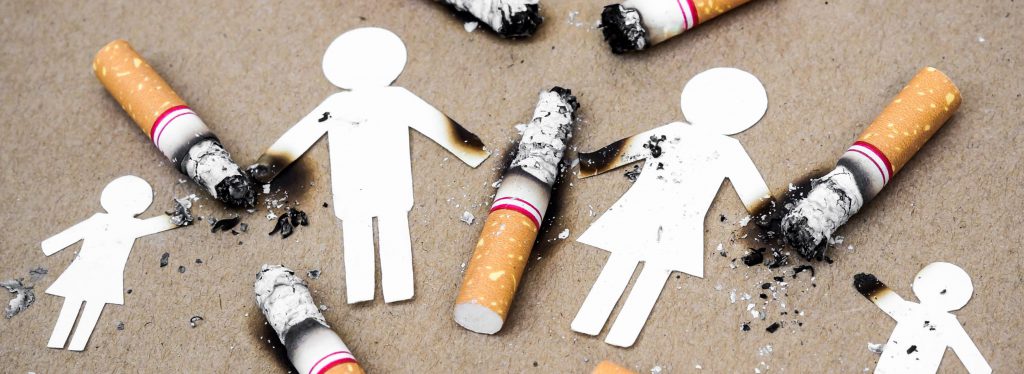Parents should take extra measures at home and in the car to protect their toddlers from secondhand and third hand dangers.
If you smoke or use tobacco products, science says you should quit to benefit not only your health, but also the health of those around you.
Secondhand smoke contains thousands of chemicals, many of which are toxic and can cause cancer. Secondhand smoke is especially harmful to toddlers, whose growing bodies are particularly vulnerable to the effects of these chemicals. Toddlers exposed to secondhand smoke are at danger of developing:
- Coughs, colds, wheezing and other breathing issues
- Ear infections and tooth decay
- More frequent and longer cases of illness
- Serious respiratory conditions like asthma, bronchitis and pneumonia
- Long-term exposure to secondhand smoke in children from toddlerhood to beyond can also keep their lungs from developing fully. Additionally, these children are at greater risk for cataracts, heart disease and lung cancer.
Smoke Doesn’t Disappear
While direct exposure to secondhand smoke can be detrimental to young children, the lingering effects of third hand smoke can pose risks of their own, meaning that smokers should be extra careful if they have toddlers or are visiting friends with toddlers.
Thirdhand smoke refers to the smoke particles that are leftover on furniture, floors and other surfaces long after visible smoke has dissipated. If you’ve visited people who regularly smoke in their house or car, you can clearly smell third hand smoke. Thirdhand smoke can linger on surfaces for quite some time after just a single smoking session and requires a thorough—and often expensive—decontamination process to properly clean.
Even with windows open and fans going, second and third-hand smoke quickly accumulates inside rooms and cars. Perhaps unsurprisingly, smoking outside actually poses a risk for anyone within 20 feet of burning tobacco.
Similar to secondhand smoke, third-hand smoke residue contains chemicals that are dangerous to those who come in contact with them and can even interact with other particles in the air to create more carcinogenic chemicals. The health risks from third-hand smoke are greater for toddlers, who often crawl, press their faces against furniture and place objects in their mouth as they interact with their environment.
Keeping Toddlers Safe
If you’re a parent who has never smoked or has quit smoking, you’re already on the right path to providing a healthier home for your toddler. However, you may have friends or family who smoke, or you might find yourself in a situation where you can’t control the behaviors of others. It’s important to follow these steps to keep your toddler safe:
- Don’t designate a smoking room within the house—smoke can penetrate walls and spread to other rooms.
- Don’t bring toddlers to houses of smokers, even if they promise not to smoke when your little one is there.
- Hire babysitters who do not smoke.
- Limit smoking to the outdoors, and make sure no toddlers are outside when friends or family are smoking.
- Never allow smoking in your car, even when toddlers are not around.
There’s nothing wrong with reminding others to respect your wishes when it comes to secondhand smoke, especially when you have your child with you.
Sources:
aappublications.org, academic.oup.com, cdc.gov, cdc.gov, cdc.gov, fda.gov, healthychildren.org, healthychildren.org, healthychildren.org, healthychildren.org, smokefree.gov, surgeongeneral.gov
